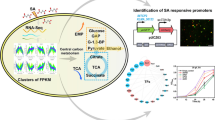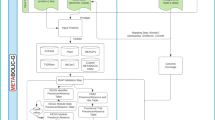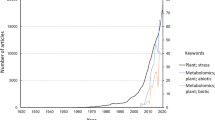Abstract
Whole-genome microarrays of Desulfovibrio vulgaris were used to determine relative transcript levels in cells grown to exponential or stationary phase on a medium containing either lactate or formate as electron donor. The results showed that 158 and 477 genes were differentially expressed when comparing exponential to stationary phase in lactate- or formate-based media, respectively; and 505 and 355 genes were responsive to the electron donor used at exponential or stationary phase, respectively. Functional analyses suggested that the differentially regulated genes were involved in almost every aspect of cellular metabolism, with genes involved in protein synthesis, carbon, and energy metabolism being the most regulated. The results suggested that HynBA-1 might function as a primary periplasmic hydrogenase responsible for oxidation of H2 linked to the proton gradient in lactate-based medium, while several periplasmic hydrogenases including HynBA-1 and Hyd might carry out this role in formate-based medium. The results also indicated that the alcohol dehydrogenase and heterodisulfide reductase catalyzed pathway for proton gradient formation might be actively functioning for ATP synthesis in D. vulgaris. In addition, hierarchical clustering analysis using expression data across different electron donors and growth phases allowed the identification of the common electron donor independent changes in gene expression specifically associated with the exponential to stationary phase transition, and those specifically associated with the different electron donors independent of growth phase. The study provides the first global description and functional interpretation of transcriptomic response to growth phase and electron donor in D. vulgaris.
Similar content being viewed by others
References
Albert T.J., Norton J., Ott M., Richmond T., Nuwaysir K., Nuwaysir E.F., Stengele K.P., Green R.D. (2003) Light-directed 5′−>3′ synthesis of complex oligonucleotide microarrays. Nucleic Acids Res. 31:e35
Atlung T., Nielsen A., Hansen F.G. (1989) Isolation, characterization and nucleotide sequence of appY, a regulatory gene for growth-phasedependent gene expression in Escherichia coli. J. Bacteriol. 171:1683–1691
Fareleira P., Legall J., Xavier A.V., Santos H. (1997) Pathways for utilization of carbon reserves in Desulfovibrio gigas under fermentative and respiratory conditions. J. Bacteriol. 179:3972–3980
Flachmann R., Kunz N., Seifert J., Gutlich M., Wientjes F.J., Laufer A., Gassen H.G. (1988) Molecular biology of pyridine nucleotide biosynthesis in Escherichia coli. Cloning and characterization of quinolinate synthesis genes nadA and nadB. Eur. J. Biochem. 175:221–228
Gallegos M.T., Schleif R., Bairoch A., Hofmann K., Ramos J.L. (1997) Arac/XylS family of transcriptional regulators. Microbiol. Mol. Biol. Rev. 61:393–410
Hahnenberger K.M., Shapiro L. (1987) Identification of a gene cluster involved in flagellar basal body biogenesis in Caulobacter crescentus. J. Mol. Biol. 194:91–103
Hansmann S., Martin W. (2000) Phylogeny of 33 ribosomal and six other proteins encoded in an ancient gene cluster that is conserved across prokaryotic genomes: influence of excluding poorly alignable sites from analysis. Int. J. Syst. Evol. Microbiol. 50:1655–1663
Haveman S.A., Brunelle V., Voordouw J.K., Voordouw G., Heidelberg J.F., Rabus R. (2003) Gene expression analysis of energy metabolism mutants of Desulfovibrio vulgaris Hildenborough indicates an important role for alcohol dehydrogenase. J. Bacteriol. 185:4345–4353
Hedderich R., Koch J., Linder D., Thauer R.K. (1994) The heterodisulfide reductase from Methanobacterium thermoautotrophicum contains sequence motifs characteristic of pyridine-nucleotide-dependent thoredoxin reductases. Eur. J. Biochem. 225:253–261
Heidelberg J.F., Seshadri R., Haveman S.A., Hemme C.L., Paulsen I.T., Kolonay J.F., Eisen J.A., Ward N., Methe B., Brinkac L.M., Daugherty S.C., Deboy R.T., Dodson R.J., Durkin A.S., Madupu R., Nelson W.C., Sullivan S.A., Fouts D., Haft D.H., Selengut J., Peterson J.D., Davidsen T.M., Zafar N., Zhou L., Radune D., Dimitrov G., Hance M., Tran K., Khouri H., Gill J., Utterback T.R., Feldblyum T.V., Wall J.D., Voordouw G., Fraser C.M. (2004) The genome sequence of the anaerobic, sulfate-reducing bacterium Desulfovibrio vulgaris Hildenborough. Nat. Biotechnol. 22:554–559
Hoog J.O., von Bahr-Lindstrom H., Jornvall H., Holmgren A., (1986) Cloning and expression of the glutaredoxin (grx) gene of Escherichia coli. Gene 43:13–21
Hyland S.A., Eveland S.S., Anderson M.S. (1997) Cloning, expression, and purification of UDP-3-O-acyl-GlcNAc deacetylase from Pseudomonas aeruginosa: a metalloamidase of the lipid A biosynthesis pathway. J. Bacteriol. 179:2029–2037
Keener J., Nomura M. (1996) Regulation of ribosome synthesis. In: Neidhardt F.C., Curtiss III R., Ingraham J.L., Lin E.C.C., Low K.B., Magasanik B., Reznikoff W.S., Riley M., Schaechter M., Umbarger H.E. (eds) Escherichia coli and Salmonella: Cellular and Molecular Biology, 2nd ed. ASM Press, Washington, DC, pp 1417–1431
Keon R.G., Fu R., Voordouw G. (1997) Deletion of two downstream genes alters expression of the hmc operon of Desulfovibrio vulgaris subsp. vulgaris Hildenborough. Arch. Microbiol. 167:376–383
Lissolo T., Choi E.S., LeGall J., Peck H.D. Jr. (1986) The presence of multiple intrinsic membrane nickel-containing hydrogenases in Desulfovibrio vulgaris (Hildenborough). Biochem. Biophys. Res. Commun. 139:701–708
Lumppio H.L., Shenvi N.V., Garg R.P., Summers A.O., Kurtz D.M. Jr. (1997) A rubrerythrin operon and nigerythrin gene in Desulfovibrio vulgaris (Hildenborough). J. Bacteriol. 179:4607–4615
Lumppio H.L., Shenvi N.V., Summers A.O., Voordouw G., Kurtz D.M. Jr. (2001) Rubrerythrin and rubredoxin oxidoreductase in Desulfovibrio vulgaris: a novel oxidative stress protection system. J. Bacteriol. 183:101–108
Maklashina E., Berthold D.A., Cecchini G. (1998) Anaerobic expression of Escherichia coli succinate dehydrogenase: functional replacement of fumarate reductase in the respiratory chain during anaerobic growth. J. Bacteriol. 180:5989–5996
Martin J.F., Barreiro C., Gonzalez-Lavado E., Barriuso M. (2003) Ribosomal RNA and ribosomal proteins in corynebacteria. J. Biotechnol. 104:41–53
Melin L., Rutberg L., von Gabain A. (1989) Transcriptional and posttranscriptional control of the Bacillus subtilis succinate dehydrogenase operon. J. Bacteriol. 171:2110–2115
Meuer J., Bartoschek S., Koch J., Kunkel A., Hedderich R. (1999) Purification and catalytic properties of Ech hydrogenase from Methanosarcina barkeri. Eur. J. Biochem. 265:325–335
Meuer J., Kuettner H.C., Zhang J.K., Hedderich R., Metcalf W.W. (2002) Genetic analysis of the archaeon Methanosarcina barkeri Fusaro reveals a central role for Ech hydrogenase and ferredoxin in methanogenesis and carbon fixation. Proc. Natl. Acad. Sci. (USA) 99:5632–5637
Moran A.J., Doran J.L., Wu J., Treit J.D., Ekpo P., Kerr V.J., Roberts A.D., Orme I.M., Galant S., Ress S.R., Nano E.E. (1999) Identification of novel immunogenic Mycobacterium tuberculosis peptides that stimulate mononuclear cells from immune donors. FEMS Microbiol. Lett. 177:123–130
Mulliez E., Ollagnier S., Fontecave M., Eliasson R., Reichard P. (1995) Formate is the hydrogen donor for the anaerobic ribonucleotide reductase from Escherichia coli. Proc. Natl. Acad. Sci. (USA) 92:8759–8762
Nuwaysir E.F., Huang W., Albert T.J., Singh J., Nuwaysir K., Pitas A., Richmond T., Gorski T., Berg J.P., Ballin J., McCormick M., Norton J., Pollock T., Sumwalt T., Butcher L., Porter D., Molla M., Hall C., Blattner F., Sussman M.R., Wallace R.L., Cerrina F., Green R.D. (2002) Gene expression analysis using oligonucleotide arrays produced by maskless photolithography. Genome Res. 12:1749–1755
Odom J.M., Peck H.D. Jr. (1981) Hydrogen cycling as a general mechanism for energy coupling in the sulfate-reducing bacteria Desulfovibrio sp. FEMS Microbiol. Lett. 12:47–50
Peck H.D. Jr. (1966) Phosphorylation coupled with electron transfer in extracts of the sulfate reducing bacterium, Desulfovibrio gigas. Biochem. Biophys. Res. Commun. 22:112–118
Peck H.D., Jr. (1994) Bioenergetic strategies of the sulfate-reducing bacteria. In: Odom J.M., Singleton R. Jr. (eds) The Sulfate-reducing Bacteria: Contemporary Perspectives. Springer Verlag, New York, pp 41–75
Pieulle L., Magro V., Hatchikian E.C. (1997) Isolation and analysis of the gene encoding the pyruvate-ferredoxin oxidoreductase of Desulfovibrio africanus, production of the recombinant enzyme in Escherichia coli, and effect of carboxy-terminal deletions on its stability. J. Bacteriol. 179:5684–5692
Rabus R., Hansen T. and Widdel F. 2001. Dissimilatory sulfate-and sulfur-reducing prokaryotes. In: Dworkin M., Falkow S., Rosenberg E., Schleifer K.H. and Stackebrandt E. (eds) The Prokaryotes: An Evolving Electronic Resource for the Microbiological Community. Heidelberg, Springer Science Online (http://www.prokaryotes.com)
Shuto H., Fukui T., Saito T., Shirakura Y., Tomita K. (1981) An NAD-linked acetoacetyl-CoA reductase from Zoogloea ramigera I-16-M. Eur. J. Biochem. 118:53–59
Stringfellow J.M., Turpin B., Cooper R.A. (1995) Sequence of the Escherichia coli C homoprotocatechuic acid degradative operon completed with that of the 2,4-dihydroxyhept-2-ene-1,7-dioic acid aldolase-encoding gene (hpcH). Gene 166:73–76
Van Schaik W., Zwietering M.H., De Vos W.M., Abee T. (2004) Identification of sigma B-dependent genes in Bacillus cereus by proteome and in vitro transcription analysis. J. Bacteriol. 186:4100–4109
Voordouw G. (1995) The Genus Desulfovibrio: The Centennial. Appl. Environ. Microbiol. 61:813–2819
Voordouw G. (2002) Carbon monoxide cycling by Desulfovibrio vulgaris Hildenborough. J. Bacteriol. 184:5903–5911
Voordouw G., Brenner S. (1985) Nucleotide sequence of the gene encoding the hydrogenase from Desulfovibrio vulgaris (Hildenborough). Eur. J. Biochem. 148:515–520
Ye R.W., Wang T., Bedzyk L., Croker K.M. (2001) Applications of DNA microarrays in microbial systems. J. Microbiol. Methods 47:257–272
Acknowledgements
The research described in this paper was conducted under the Laboratory Directed Research and Development LDRD Program at the Pacific Northwest National Laboratory, a multi-program national laboratory operated by Battelle for the U.S. Department of Energy under Contract DE-AC056-76RLO1830.
Author information
Authors and Affiliations
Corresponding author
Electronic supplementary material
10482_2005_9024_MOESM1_ESM.pdf
Supplementary material is available for this article at http://www.dx.doi.org/10.1007/s10482-005-9024-z and is accessible for authorized users.
Rights and permissions
About this article
Cite this article
Zhang, W., Culley, D.E., Scholten, J.C.M. et al. Global transcriptomic analysis of Desulfovibrio vulgaris on different electron donors. Antonie Van Leeuwenhoek 89, 221–237 (2006). https://doi.org/10.1007/s10482-005-9024-z
Received:
Accepted:
Published:
Issue Date:
DOI: https://doi.org/10.1007/s10482-005-9024-z




